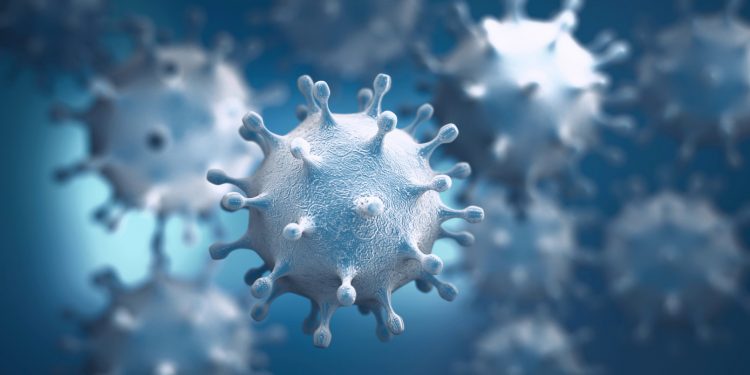SARS-CoV-2, the virus that causes COVID-19 disease, is more transmissible. However, it has a lower mortality rate than its sibling, SARS-CoV, according to a new review article published this week in Antimicrobial Agents and Chemotherapy, a journal of the American Society for Microbiology.
In humans, coronavirus causes mainly acute respiratory infections. Individuals with SARS-CoV-2 may remain asymptomatic for 2 to 14 days post-infection and some individuals are likely to transmit the virus without developing disease or symptoms.
So far, the most promising compound for treating COVID-19 is the antiviral Remdesivir. It is currently in clinical trials for treating Ebola virus infections. Remdesivir was recently tested in a non-human primate model of MERS-CoV infection.
Prophylactic treatment 24 hours prior to inoculation prevented MERS-CoV from causing clinical disease and inhibited viral replication in lung tissues, preventing formation of lung lesions. Initiation of treatment 12 hours after virus inoculation was similarly effective.
Remdesivir has also shown effectiveness against a wide range of coronaviruses. It has already undergone safety testing in clinical trials for Ebola, thereby reducing the time that would be necessary for conducting clinical trials for SARS-CoV-2.
Nonetheless, much work needs to be done to gain a better understanding of the mechanics of SARS-CoV-2. For instance, how SARS-CoV-2 interacts with the host ACE2 receptor – by which SARS-CoV-2 gains entry into the host (whether human or animal) – might reveal how this virus overcame the species barrier between animals and humans. This could also lead to design of new antivirals.
Although coronaviruses are common in bats, no direct animal source of the epidemic has been identified to date, according to the report. “It is critical to identify the intermediate species to stop the current spread and to prevent future human SARS-related coronavirus epidemics,” the researchers wrote.
Other approaches listed in their review and article published include blocking SARS-CoV-2 from entering cells, disrupting viral replication, antivirals, vaccines and suppressing overactive immune response.
Tilarone is a broad-spectrum antiviral that may also be active against SARS-CoV-2. The synthetic small molecule is used in some countries, including Russia and neighbours, to treat several viruses, including acute respiratory viral infection, influenza and hepatitis.
Other studies suggest tilarone may be active against Middle Eastern Respiratory Syndrome (MERS-CoV); however, the studies do not meet US Food and Drug Administration (FDA) standards for safety.
The review cited more than 15 vaccine candidates being developed globally, with various approaches to their design. The authors suggest the expert opinion is that it will take approximately 12 to 18 months to get one to market.






































